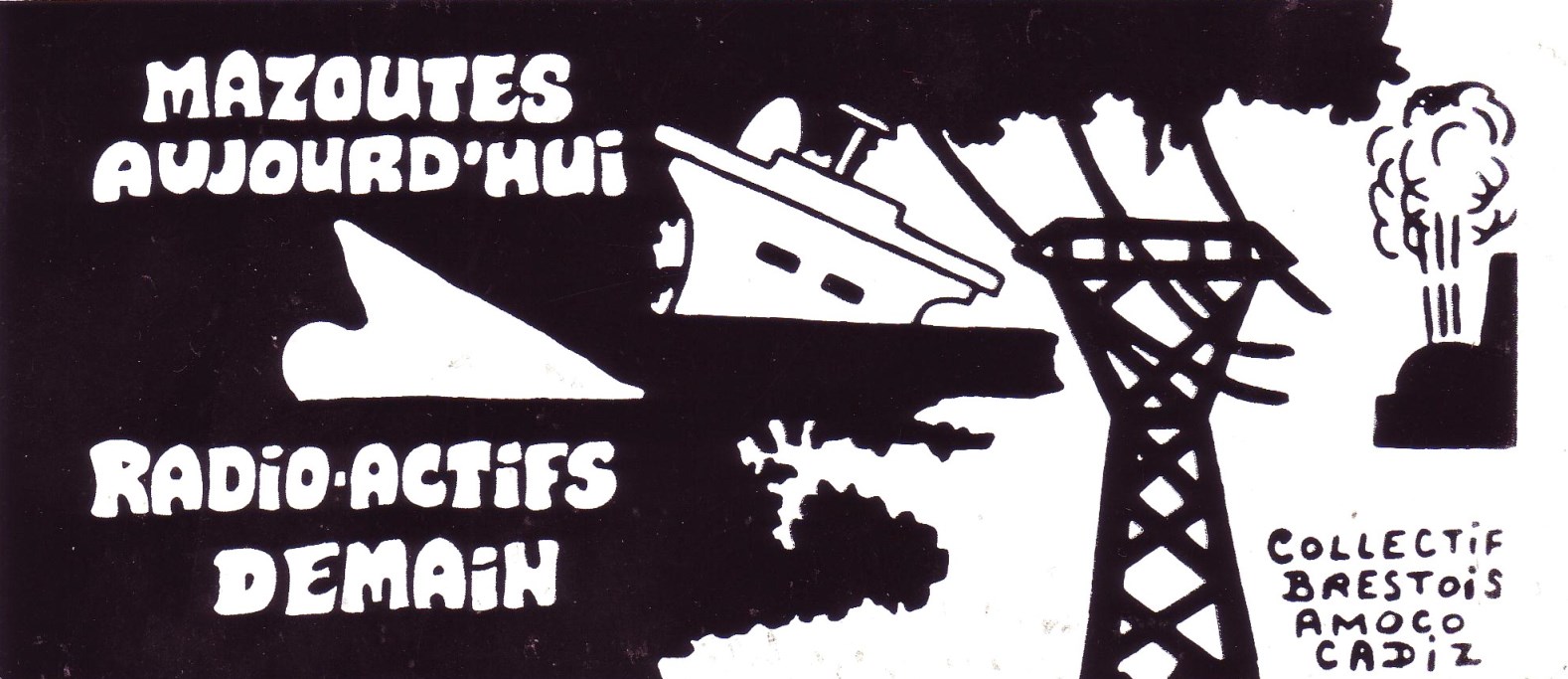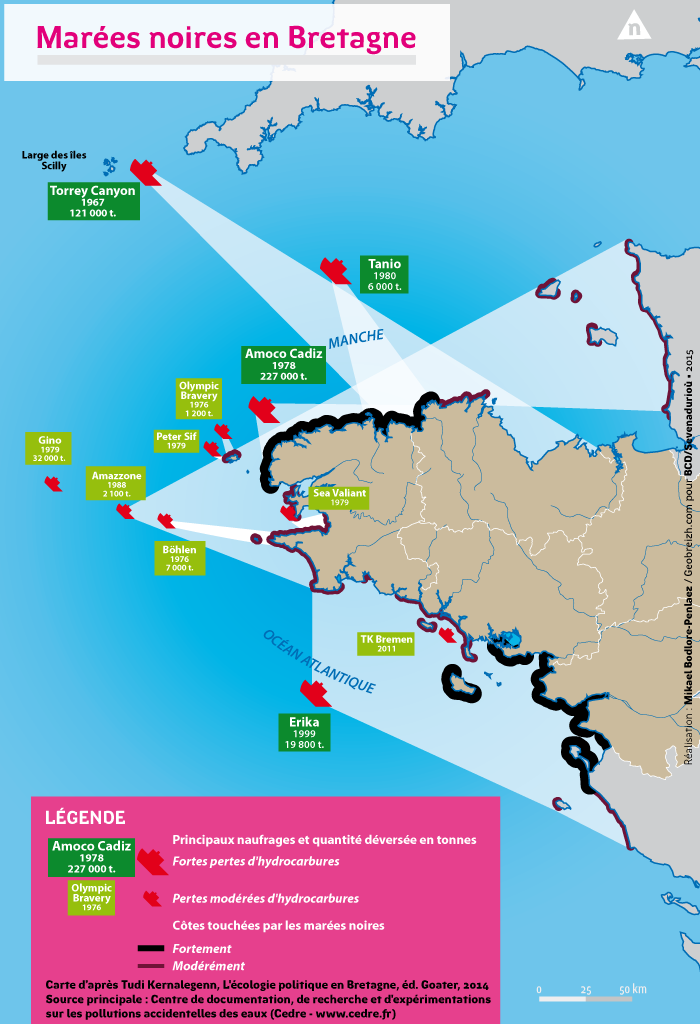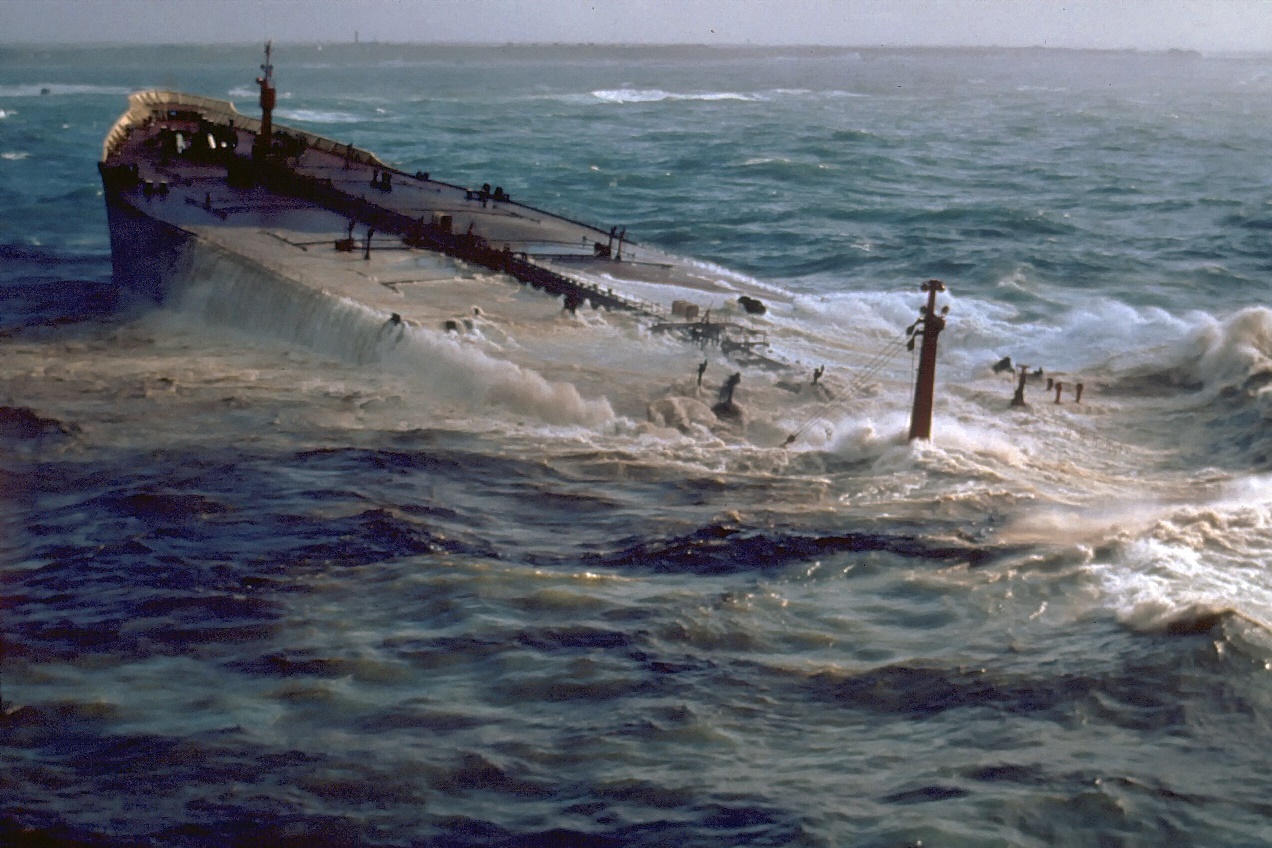After the Torrey Canyon shipwreck in 1967, Brittany fell victim to a succession of oil spills. On the 16th March 1978, the super tanker Amoco Cadiz was shipwrecked off the coast of Ploudalmézeau. More than 220 000 tons of fuel spilled onto the Léon coast. The scale of the disaster was unprecedented and shocked the population deeply, especially since the government’s response (the Polmar plan) proved to be ineffective.
Environmental Consciousness
Immediately afterwards, on the 17th March, four hundred people gathered in an improvised protest. This was the beginning of a long series of around twenty protests over the course of two weeks, which brought together over 50 000 people in the Finistère alone. Around ten anti-oil spill Committees were created, often within antinuclear movements which were proof of the success of the slogan “Oil-polluted today, radioactive tomorrow.” At the time in fact, a very active antinuclear struggle was being fought not far from the site of the shipwreck, in Ploumoguer and incidentally, a few months later, the Ploumoguer site was abandoned in favour of Plogoff.

The reports and the protests were evidence that oil spills were no longer blamed upon fate but were rather seen as a political problem: “a flag of convenience”, “a race for gigantism” and “development at all costs” were abundantly denounced. The reactions to the oil spill revealed the emergence of an environmental consciousness within the population.
A Legal Saga
From the spring of 1978 onwards, the Breton councillors met up in Committees of coordination and vigilance, one in the Finistère and the other in the Côtes-du-Nord. Collectively with environmental associations and coastal experts, they decided to file a civil case and to initiate legal proceedings in Chicago against the company Amoco (at the time, Standard Oil of Indiana). It was the beginning of a long legal saga.
In June 1980, the local Breton committees united in a joint federation for the protection and conservation of Brittany’s North-West coast. In turn, they regrouped 92 communes, the departments of Finistère and of Côtes-du-Nord and gained the support of almost all the coastal experts such as the SEPNB (Society for the study and protection of the countryside in Brittany, present Brittany living) and the LPO (Association for the protection of birds). Representative of the population affected by the Amoco Cadiz oil spill, it is this organisation that from then onwards led the legal fight for the compensation of the victims. Alphonse Arzel, the centrist mayor of Ploudalmézeau was elected president of the organisation and led the battle from this position for twenty years.
The trial began on the 4th May 1982. After a lengthy trial, the judge Mac Garr named Standard Oil responsible for the accident on the 18th April 1984. In May in 1986, the second part of the trial to claim compensations began, which ended on the 24th July 1990 by granting only 123 million francs to the joint federation, nowhere near the sum that they were asking for. The joint federation therefore appealed and finally obtained 225 million francs on the 24th January 1992 (the French State meanwhile obtained over a billion francs). Even though in the end the joint federation only obtained 10% of what they demanded, this trial is still historical and can be considered as a true victory for the Bretons. For the first time ever, a big petrol company was obliged to pay its victims.

Jurisprudence
Following another oil spill in 1999 (the Erika) the mayors decided to broaden the joint federation’s duties in order to continue to fight against maritime pollution. This became the Vigipol in 2001, with the aim of “coordinating and uniting the means of each adherent committee to take action whenever necessary, with all partners, be they French or foreign, for the protection of the coast, the residents and their interests.”
The consequences of the Amoco Cadiz oil spill were numerous and long-lasting. In addition to Vigipol, other organisations arose from it, such as CEDRE (Centre of documentation, research and experimentation on accidental water pollutions). Security measures were reinforced, a radar tower was added to the Stiff lighthouse on the Isle of Ouessant in 1978; a salvage tug ‘l’Abeille Flandre”, was based in Brest during the months that followed to intervene quickly in the Ouessant sea passage, which was far from the coast and made secure, etc. Finally, the Amoco trial made jurisprudence on a worldwide scale and has since made it possible to bring those responsible for oil spills to justice.


